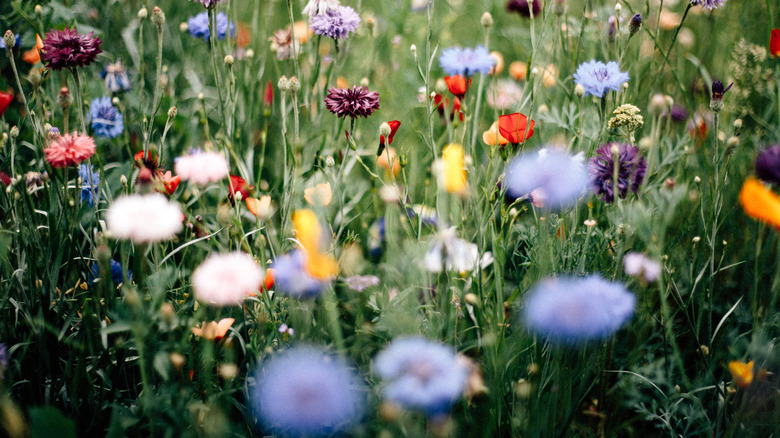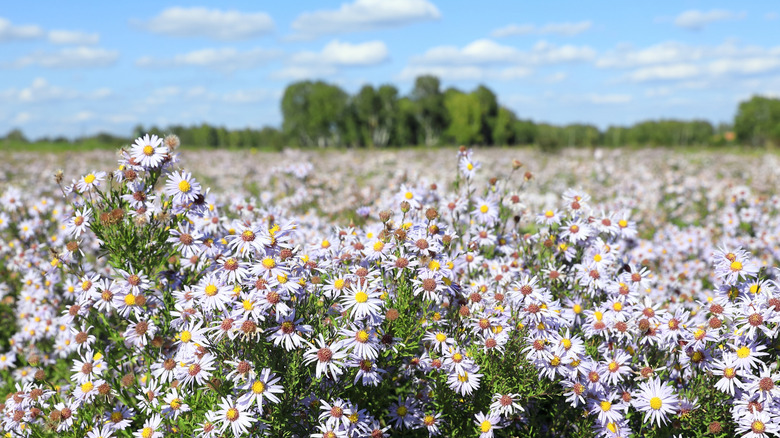The Beautiful Late-Summer Flower That'll Keep Your Garden Vibrant Through Fall
Flowers are most prominent during spring and summer, but there are several varieties that dominate in the fall. One option is a plant called boltonia (Boltonia asteroides), also sometimes referred to as a white doll's daisy, false aster, starwort, or thousand flower aster. It is a great plant if you're looking for flowers to keep your garden bright and beautiful even into the harvest season. Like other plants in the aster family, they are fall-blooming perennials that bloom late into the year and come in softer colors than flowers like marigolds.
They look a little like daisies, with bright yellow centers and white or faintly purple thin and long petals. There are even a few varieties to check out. 'Snowbank' is a shorter option — only 3 to 4 feet tall — with bright white flowers. 'Nana' is a dwarf version, rarely growing more than 3 feet tall, with purple petals. 'Pink Beauty' has pale pink blooms and does especially well in the fall. They may not be as bold as some of the other beautiful flowers to plant in the late summer for gorgeous fall blooms, but if you're looking for something soft with an abundance of growth, then boltonia should be one up for consideration. These flowers bloom in late summer and will survive until the first frost. Depending on where you live, this is likely some time in September, or even into October or later. Another perk of boltonias is that they are perennials, so they come back every year. They tend to live for 10 years, blooming all the while.
Caring for boltonia is easy
You can find boltonias in the wild. They thrive in parts of Canada and are pretty much anywhere east of North Dakota and Texas. They grow primarily in meadows, marshes, prairies, ditches, forests, and near ponds, and are hardy in USDA zones 3 to 9. It's a great plant to attract pollinators, bringing in moths, beetles, bees, butterflies, and more. When you first go to plant these flowers, it's best to do it shortly after the last frost, especially if you have a shorter growing season. This gives the boltonia plenty of time to grow before the cold slows them down. While you could prune them to help it stay a manageable size, you also have the opportunity to let it turn essentially into a flowering hedge. Because they grow so tall, they work best paired with other large plants, or when there are several grown together.
Boltonias enjoy full sun, need an average amount of water, and like normal and clay soils. It helps their roots remain a little wet, which is what they tend to prefer, as they are naturally found in wetlands and similar environments. However, after it is fully grown, it is able to handle small periods of drought, but it does best when it gets regular water. It grows well alongside other plants in the Asters, goldenrods (Solidago) and Joe-pye weed (Eutrochium fistulosum). They can also pair with bright, eye-catching florals like black-eyed Susans (Rudbeckia hirta) — the perfect fall flower that's even deer resistant.

